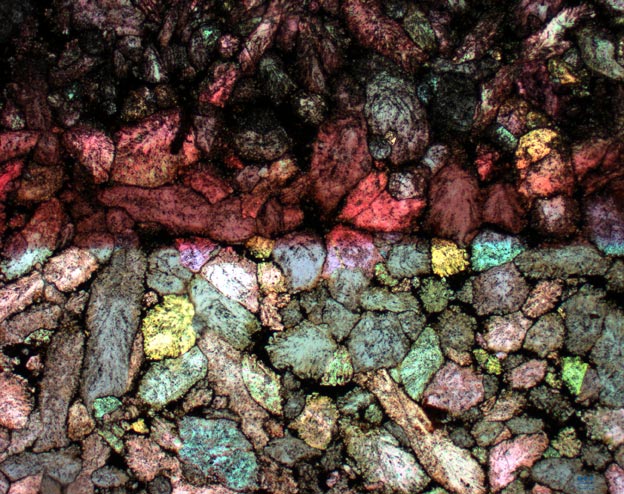Juvenile Shale Gas in Sweden – Tectonics and deep biosphere

Fig. 1: Calcit crystals in the Alum Shale as indicators of methane formation (Photo: GFZ)
Considering geological time scales, the occurrence of biogenic shale gas in Sweden´s crust is relatively young. An international team of geoscientists (led by Hans-Martin Schulz, German Research Centre for Geosciences GFZ) found that biogenic methane in the Alum Shale in South Sweden formed due to deglaciation around 12.000 years ago.
Moreover, the formation processes were due to complex interactions between neotectonic activity and the occurrence of a deep biosphere. Applying a new hydrogeochemical modelling approach, the specific methane generation process was unravelled and quantified for the first time in Europe.
Around 300 million years ago the Variscan Mountain belt was formed in Central Europe. Its orogeny and uplift was coupled to extensional movements in today´s Northern Europe.
As a result, mafic magmas intruded the early Palaeozoic rock sequence and led to oil formation in the Alum Shale followed by its expulsion. Migrating bitumens impregnated the Alum Shale outside the area of thermal influence.
The melting of the up to three kilometers thick glaciers at the end of the last glaciation led to a beginning uplift of the formerly glaciated Baltic Sea region which still today rises by up to 10 mm per year. A consequence of this uplift tendency is the formation of fractures along which melting water migrated into the subsurface.
It is important to note that low contents of dissolved solids in formation water is a prerequisite for methanogenic microbes to convert soluble oil components into methane. Accordingly, methane is stored in black shale today and can be found up to approximately 100 meters depth.
Up to now, similar biogenic methane resources were exclusively known from North America which was glaciated as Northern Europe. The most prominent example is the Antrim Shale of Devonian age in Michigan.
Hans-Martin Schulz, Steffen Biermann, Wolfgang van Berk, Martin Krüger, Nontje Straaten, Achim Bechtel, Richard Wirth, Volker Lüders, Niels Hemmingsen Schovsbo, and Stephen Crabtree: „From shale oil to biogenic shale gas: Retracing organic–inorganic interactions in the Alum Shale (Furongian–Lower Ordovician) in southern Sweden.”, AAPG Bulletin, v. 99, no. 5 (May 2015), pp. 927–956, DOI: 10.1306/10221414014
Media Contact
More Information:
http://www.gfz-potsdam.de/All latest news from the category: Earth Sciences
Earth Sciences (also referred to as Geosciences), which deals with basic issues surrounding our planet, plays a vital role in the area of energy and raw materials supply.
Earth Sciences comprises subjects such as geology, geography, geological informatics, paleontology, mineralogy, petrography, crystallography, geophysics, geodesy, glaciology, cartography, photogrammetry, meteorology and seismology, early-warning systems, earthquake research and polar research.
Newest articles

First-of-its-kind study uses remote sensing to monitor plastic debris in rivers and lakes
Remote sensing creates a cost-effective solution to monitoring plastic pollution. A first-of-its-kind study from researchers at the University of Minnesota Twin Cities shows how remote sensing can help monitor and…

Laser-based artificial neuron mimics nerve cell functions at lightning speed
With a processing speed a billion times faster than nature, chip-based laser neuron could help advance AI tasks such as pattern recognition and sequence prediction. Researchers have developed a laser-based…

Optimising the processing of plastic waste
Just one look in the yellow bin reveals a colourful jumble of different types of plastic. However, the purer and more uniform plastic waste is, the easier it is to…



